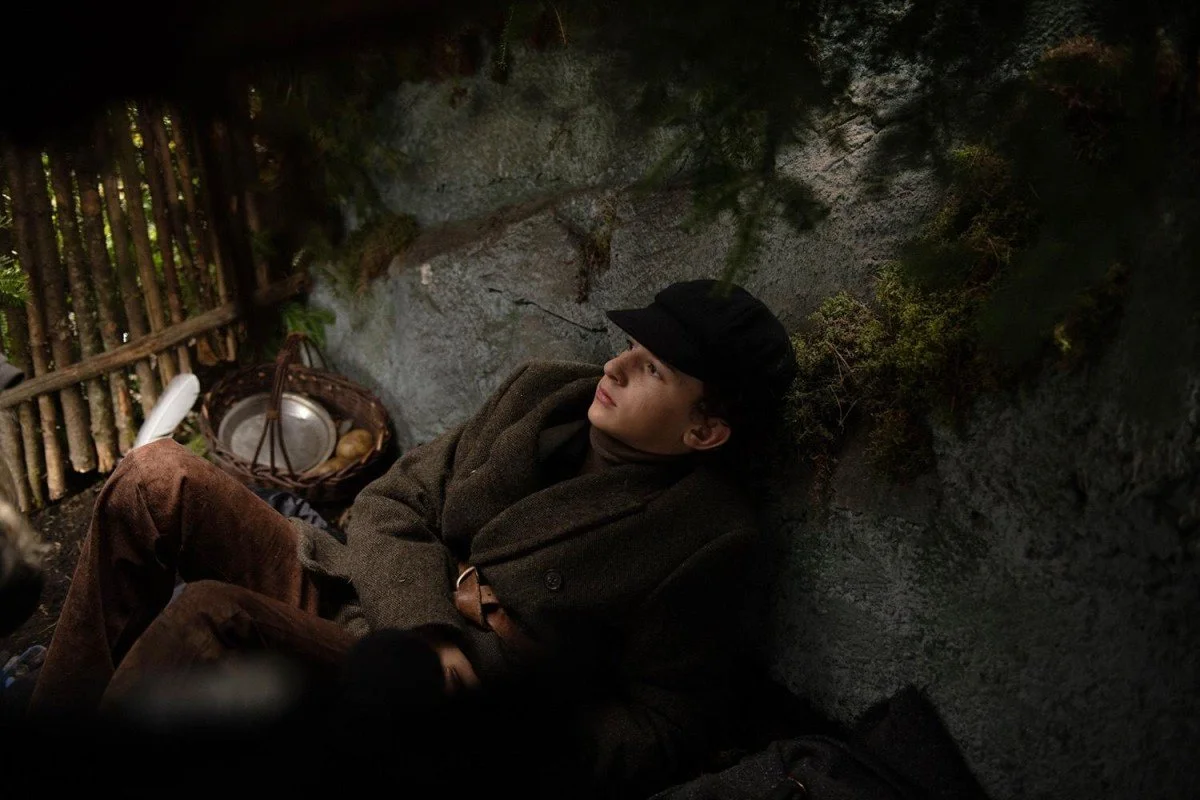An elegant and highly emotional film graced theatres last week: Woman in Gold. Starring Helen Mirren (Miriam), Ryan Reynolds, and Daniel Gruhl, Simon Curtis takes us on a sweeping journey of a holocaust victim's life after WWII. It is based off of the true story of Maria Altman's quest to retrieve her aunt's portrait, Adele Bloch-Bauer, from Austria. The film champions justice, for once, and Maria is able to safely bring her family heirlooms back to America and in the hands of what has grown to be her home.
- Where did this film take me? The film appears to be a melodrama on the surface, plunging us full tilt into a family history shared by two very different people. Yet they share more and more in common as the film progresses. The film opens with two critical scenes. There is a vibrant flashback to the painter, Kimft, creating the portrait of Adele in Austria. with a funeral scene on a bright-blue-sky day in L.A.. We are immediately introduced to Maria Altman, a small business owner in her 80s and the sister to the deceased. Maria tells her friend that there is some unfinished family business she needs to attend to. The consoling friend puts Maria in contact with her grandson, Randol (lawyer). He is a not-so successful lawyer, a bit of a clutz, but an excellent and compassionate communicator. After Randol and Maria meet, we begin to see flashbacks of a past that Maria is trying to come to terms with. There is an elegant beauty in the flashback images. They are rich in both colour and culture. Maria's family in the past shares the same values as Randol's young family: determination, hard work, and sacrifice for the children. The melodrama expands outwards though, and America takes on a paternal role. America is the safe haven for refugees during WWII escaping their motherland. The motherland is represented as a complex and problematic sphere, atypical of the usual patriotic and comforting images of home, Woman in Gold challenges the notion of "home", "native" and "country" ideals. Images of the past seep into the present tense as Maria struggles to come to terms with her painful memories. Randol's own Jewish family history strongly increases his desire to win the case when he remembers the death of his grandparents at a concentration camp.
- How did I feel? This film was a flurry of emotions. The rollercoaster ride was smooth, though, calling attention to some seriously awesome editing skills. The pacing was flawless and had me feeling all the right emotions at the right times. Important information was slowly revealed throughout the film, keeping my attention constantly focused on the events. Telling the story like a melodrama also had me passionately rooting for the main characters. I felt the frustrations, the challenges, and, for once, felt like cheering at the end of the film. There were never any tasteless moments. The unique perspective allowed me to engage with the protagonist, even if I do not share that same history. Maria was a wronged citizen of Austria. Neither her religion nor origin mattered in the narrative. She was positioned in such a way that shook up the Austrian government, who would have rather singled her out as a wronged Jewish woman than a wronged citizen of Austria. Therefore, the fight for justice extended beyond Maria and beyond Randol. She had the gumption to fight a bureaucratic art restoration movement and take her motherland to court.
- What issues were addressed? I think there are several key issues that this movie highlights very eloquently. The first and foremost being the importance of memory. As Maria pointed out to Randol, "Young people are likely to forget. That is why I remember." Like Randol, we the audience (or the younger persons watching the film) are not from that generation that experienced WWII. Therefore, our journey and responsibility is to learn and remember and pass down the history to the next generation. Maria is ready to give up when she realizes how long the trial might take. She finds peace in letting the events slip away out of her control. Randol sweeps in with his young and excited blood to stir the pot and fight the good fight. A generation that was wronged comes together with a generation that has the capacity to pave a brighter future for the next generations. In this, our emotional journey is Randols. Another important issue is that of ownership, and the rights to owning property / things. The art restoration movement in Austria sought to return art that was misplaced / stolen during WWII to its rightful owners. Yet it went against this by championing the wants of the country over the rights of its people. The painting of Adele Bloch-Bauer is a symbol for Austria and an important memento for the gallery. By removing it, Maria is thus affecting the "whole" population. She justifies her cause wisely, stating that "while the world sees this as a beautiful painting made of gold sheets, she sees a picture of her aunt." Further to this, while she is able to refer to the portrait as Adele, Austria calls it The Woman in Gold; continuing the Nazi practice of attempting to erase the history of Jewish ancestry in Europe. The art restoration project becomes a pseudo-natzi-ism for Maria, denying her of her family's rights as Austrians, and the law-binding agreement of her Uncle's will. While I can argue that here is yet again another story about "America" coming to the rescue, there is nothing wrong with the sweet victory she receives at the end of her long awaited trial with the help of the American Justice system.
- The biggest surprise for me was seeing Ryan Reynolds play a serious character. He was, of course, allowed his funny moments, but they heightened the film instead of making the drama cheesy. His awkward encounters with Maria and his blunders in the courtroom really added to his character. I felt emotionally on board with his plight. Helen Mirren was as delightful as always. Slightly snobbish but with the right amount of maternal affection. She was a great representation of a lost generation finding its voice again. The ending titles were also a favourite part. They disclosed the information about the real Maria Altman and how that opened up opportunities for other art cases like hers.
- Is there a transformative experience? Yes. More so for Randol than Maria. Maria is able to find peace in her heart knowing that justice was served. She brought her ancestry and history back to the forefront of society by forcing the world to remember and admit the wrong. Randol, having not fully understood the importance of his past, is given the chance to avenge his grandparent's horrifying deaths by helping Maria succeed. He squeezes the lemons that life has given him (sort of speak) and drinks the rewording juice.
Overall, I believe that this film is an extremely beautiful portrayal of intelligence out-weighing money and political power. The right things in this film are emphasized - memory, symbolism and art, ownership and rights, war justice, and self-identity - and justice is served.
- Jenn





